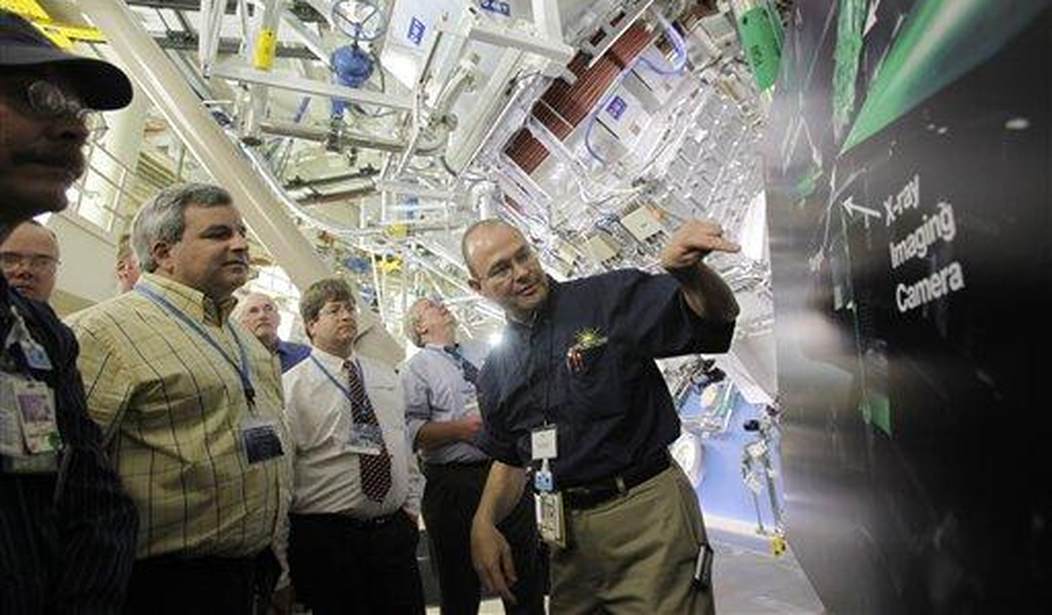I know this is a contrarian take, but stick with me here.
A lot of noise was made about a fusion energy breakthrough, but I hate to tell you that for all the hoopla the results they announced were actually a big dud.
"It’s the sun in a box. It’s a man-made star. It’s the little engine in Tony Stark’s chest…It’s the idea that it could be the perfect fuel source." — @BillWeirCNN nerds out and helps me understand this fusion energy breakthrough. pic.twitter.com/j5aiL6VLTl
— Ana Cabrera (@AnaCabrera) December 12, 2022
I know, I know. We all desperately want fusion energy to be the next big thing. And we should want that, because the promise of the technology is nearly beyond comprehension. While it will never be “too cheap to meter,” because the costs for building a fusion plant will still have to be paid for and harvesting the fuel will never be free, fusion does promise to be cheap and abundant when it finally gets here.
And clean. While I am a climate apocalypse skeptic, that doesn’t mean that I am indifferent to the pollution that fossil fuels, especially coal, emit. Fossil fuels have made modern civilization possible and gasoline is a chemical wonder, someday we will move on to bigger and better things. We should have done so with nuclear energy already, but environmentalists and government regulators have stood in the way due to irrational fears about nuclear waste and far too slow progress on safer and better technology.
Federal scientists announced that they created the first-ever nuclear fusion reaction that generated more energy than it took to produce.
Energy Secretary Jennifer Granholm called the breakthrough “one of the most impressive scientific feats.” https://t.co/jSICEunNI7 pic.twitter.com/1S7asYAsDS
— The Washington Post (@washingtonpost) December 13, 2022
So why was the breakthrough far less impressive than advertised? Let me count the ways.
First, the net energy gain is a myth. It is true that the scientists ignited the fuel and the energy release was more than the energy put into the fuel pellet. But that is not what you should be interested in. The energy used to put that energy into the pellet was vastly more than what was released.
In simple terms the lasers delivered X amount of energy to ignite the fusion process, and the fusion process delivered about 1.5X coming out. But in order to deliver that X amount of energy (about 2 million joules) they needed 150X to generate it.
In other words, the net energy “breakthrough” was actually a huge energy drain. It took 300 joules of energy to get just over 3 joules out.
All they did was use up a lot of energy to generate very little.
“These recent results [at] NIF are the first time in a laboratory anywhere on Earth [that] we were able to demonstrate more energy coming out of a fusion reaction than was put in,” NIF physicist Tammy Ma said at the news conference. She predicted that pilot projects for power plants based on the fusion approach will be built in the “coming decades.”
But this latest fusion burst still didn’t produce enough energy to run the laser power supplies and other systems of the NIF experiment. It took about 300 million joules of energy from the electrical grid to get a hundredth of the energy back in fusion.
“The net energy gain is with respect to the energy in the light that was shined on the target, not with respect to the energy that went into making that light,” says University of Rochester physicist Riccardo Betti, who was also not involved with the research. “Now it’s up to the scientists and engineers to see if we can turn these physics principles into useful energy.”
That is not an achievement. It is a disappointment. They made a somewhat interesting experiment that shows achieving fusion is possible but they are about as close to nuclear fusion power on the grid as they were 40 years ago. Uncounted billions of dollars later.
“Despite today’s announcement, fusion is neither commercial nor close to commercial, so it is still vaporware"
Indeed, you would be hard-pressed to find a plasma physicist who thinks fusion will be in the mix in the next decadehttps://t.co/JD4vfMDKkA @wired
— Mark Z. Jacobson (@mzjacobson) December 13, 2022
Then there is the laser problem. Each laser is vastly expensive, inefficient (see above), and incapable of firing often. In order to generate electricity they will have to fire 10s of times a second, and right now they can use the lasers about 10 times a week. They have no idea how to get from here to there.
Next there is the energy recovery problem. Fission energy is easy to recover as the heat generated by fission is easily captured using plain old water flowing through pipes. Water turns to steam, turbines spin, and viola! Electricity.
Theoretically that is possible, but practically speaking it will be very difficult to use this technique. Fusion ignition takes place at millions of degrees, not thousands, and has to be contained magnetically in order to keep it from destroying the machinery. How to capture that energy and turn it into electricity is a non-trivial problem. Especially capturing it without wasting almost all of it. Getting net energy out of a fusion reaction is one thing, turning it into useful energy is yet another. It is possible, but far more difficult than with other forms of energy generation.
After all, a fusion bomb delivers enormous net energy. However it is not in a form that we can use productively. See the problem? We mastered fusion almost 70 years ago. Mastering fusion in a manner that is useful for something other than complete destruction of cities is orders of magnitude more difficult.
There are private companies taking entirely different paths toward achieving the goal of providing useful electrical energy from fusion, and their ideas are very interesting. They are spending vastly less money, claim they are making real progress, and have actual plans that make sense to harvest usable power. They may be going down dead end roads as well, but their approaches are promising in a ways that the government-led approaches appear not to be.
In theory I like the idea behind Helion’s technology, although a theory and a practical device are two different things. What strikes me about their approach is that they have integrated an efficient way to convert the fusion energy into usable energy. It may or may not work, but it is intuitively simpler than using difficult to recover heat into electricity.
Will it work as advertised? I don’t know. But it sure looks more promising than what the government is working on. And, as you can see, the government is all hype and no product.
All show, no dough. That is useless.
100 units energy in to get 1 unit of energy out is a fast way to go broke and live in the dark.








Join the conversation as a VIP Member